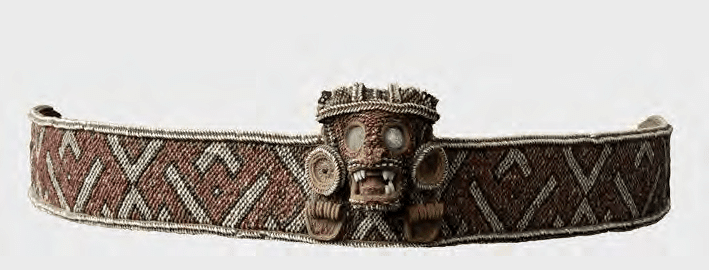Tony Castanha's The Myth of Indigenous Caribbean Extinction: Continuity and Reclamation in Borikén (Puerto Rico) is an infuriating and exciting read. For anyone interested in the neo-Taino movement and indigenous reclamation among Puerto Ricans, this book is full of rich details from oral history and everyday Jibaro culture. These do support the author's contention that the indigenous population of Puerto Rico is not extinct. This is now clear from the combination of genetic, historical, and ethnographic evidence supporting a major indigenous component in the making of Puerto Rican culture. Indeed, even in the 1800s, foreign writers noted an "Amerindian" element in the Puerto Rican peasant population's culture and physical appearance. Furthermore, Castanha uses the word Jibaro (and imaginative etymology) to designate the indigenous people of Puerto Rico. They were Jibaros and part of the "Carib" culture of the Antilles. Instead of buying into theories of Taino-Carib dichotomies, Castanha appears to prefer a cultural unity of the two while rejecting the idea of Carib ritual cannibalism (one of the other myths, according to him).
By drawing on non-mainstream research by Puerto Rican intellectuals like Lamourt-Valentin and numerous local informants, Castanha basically argues against most of the conclusions of mainstream academics in academic "Taino Studies." Instead of primarily South American origins, Castanha believes the indigenes of Puerto Rico were of Mesoamerican origin. Lamourt-Valentin, Fernandez Mendez, and some of his informants support this notion of a Mesoamerican, Mayan influence on the Jibaro. While there may indeed have been a Central American origin for some of the "Archaic" population of the Antilles, and perhaps a Mesoamerican influence on the batey ballgame, the academic mainstream researchers present far more convincing evidence of a South American origin. The Taino dependence on yuca, linguistic evidence, the corpus of myths and religious practices recorded in the Spanish chronicles, and archaeological evidence does seem to support a much stronger origin for the "Taino" along the Orinoco. For example, the numerous similarities between Taino myths as recorded by the Spanish and a number of Amazonian indigenous myths clearly supports a South American link. Unfortunately, until we can locate a copy of Lamourt-Valentin's Cannibal Recipies Fernandez Mendez's study of Taino art and its Mesoamerican affiliations, we have the unconvincing work of Castanha to evaluate.
Since Castanha borrows heavily from Lamourt-Valentin's work and alternative, non-mainstream paradigms for the study of the indigenous Caribbean, it is no surprise that he also reaches questionable conclusions about the nature of indigenous survival in post-conquest Puerto Rico. While the indigenous population definitely survived, Castanha believes in an alternative on colonial demography for the island. According to him, the Jibaro fled to the mountainous interior of Puerto Rico relatively early in the 16th century. Other historians, such as Sued Badillo, suggest the population movement into the mountains during the colonial era occurred later. Castanha also asserts population numbers that are unbelievably high for the precolonial and colonial eras. Despite the careful estimates of scholars, Castanha accepts estimates that are unbelievably high for the Greater Antilles before conquest. More disturbing, however, is the analysis of late 18th century censuses. Based solely on local informants, the author somehow reaches the conclusion that the actual population Indian origin of La Indiera (which was supposedly much larger than the later Indieras of the 19th and 20th centuries) was in the hundreds of thousands. The colonial censuses were undoubtedly flawed and many regions, especially in the mountainous interior, were undercounted. However, Castanha's estimates appear to be significantly inflated and would suggest Puerto Rico's population in the late 18th century was several times larger than the recorded population of the island. Even if one accepts the idea that most of the pardos designated in the censuses were people of partial indigenous origin, in addition to the nearly 2,000 recorded for the San German area, Castanha's figures are implausibly high.
Despite our problems with some of the conclusions of the author, this is still worth reading. By drawing on the family histories and traditions of his informants, one can see how family narratives of Indian origin and certain customs do reflect indigenous heritage. The oral histories also refer in surprising detail to 19th century events, an era in which the Spanish conquest of the interior was finally completed. For instance, family traditions of the tortures inflicted on the population during the compontes are a powerful demonstration of how descendants of 19th century Jibaros remember the Spanish colonial era. Traditions of Espiritismo, healing, and syncretic Catholic rituals likewise suggest the maintenance of some indigenous traditions in Puerto Rico. Just as interesting is the case of the Puerto Rican diaspora, which is largely left out of this study. However, Arroyo's research on Puerto Ricans in Hawaii refer to traditions of Indian descent or origin that would be fascinating to explore further. Are there Puerto Rican Diasporic communities in other states of the US with similar traditions of specific Indian ancestry and heritage? Oral history and folklore indicate the indigenous legacy was and is more significant than we initially thought. Perhaps that should be one of the areas of concentration for future researchers. A systematic collection and analysis of these traditions, one more meticulous than that offered here, could shed light on the ways the largely unlettered Jibaro defined themselves and related to the colonial state.

No comments:
Post a Comment